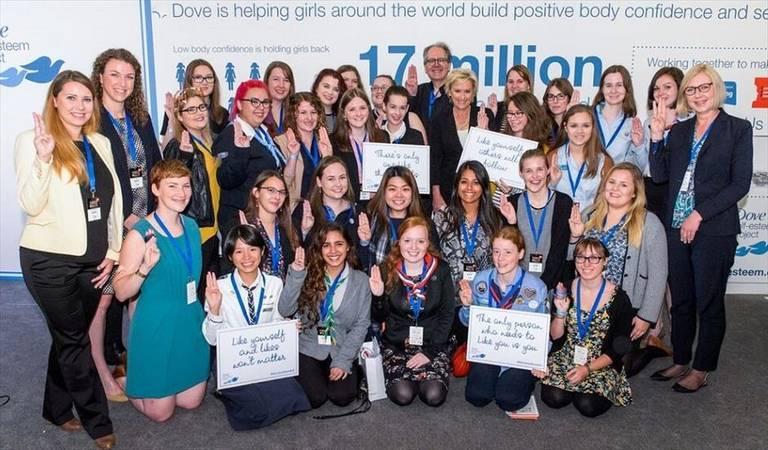Unilever’s Sustainable Living Brands Growing Faster Than Other Brands


Unilever launched its Sustainable Living Plan six years ago. The consumer packaged goods giant framed the plan as a blueprint for building business while reducing its environmental footprint and fostering positive social impact.
Since then, Unilever's Sustainable Living brands grew more than 50 percent faster than the rest of its business while delivering over 60 percent of Unilever's growth last year. A total of 18 Sustainable Living brands are in the company's top 40 earners, an increase from 12 in 2015.
More and more consumers think about sustainability when buying products. It’s a big market that could be worth $2.5 trillion, according to Unilever’s own estimates. Through consumer research Unilever commissioned, the company found that over half of all consumers already buy or want to buy sustainably. One in three (33 percent) already buy products with sustainability in mind, while 21 percent do not currently do so but would like to.
“We have made great progress,” Paul Polman, Unilever CEO, said in a statement. “Our results show that sustainability is good for business, with increasing evidence that our ‘sustainable living brands’ do better.”
How Unilever’s Sustainable Living brands make a difference in the lives of women and girls
Sunlight is part of Unilever’s Surf brand, a Sustainable Living brand that makes a positive impact in South Africa with its handwashing laundry powder. Women still do most of the laundry by hand in drought-affected South Africa, so a laundry powder that halves the amount of rinses needed to wash clothes saves water and helps women.Sunlight dates back to 1884 when the Lever Brothers first produced it as the first packaged, branded laundry soap in the world. Unilever launched the Sunlight bar in Kenya as a multipurpose soap in the late 1950s and its washing powder debuted there in 2002. Sunlight also comes in a tablet that can be used as a multipurpose soap.
Unpaid care work, caring for others and doing household chores can take up much of a woman or girl’s time. Women globally spend two to 10 times more time on unpaid care work than men, according to a 2014 report.
Unilever’s Surf brand linked up with Oxfam to lighten the load for women around the world. The brand and NGO will work on several initiatives to recognize, reduce and redistribute the amount of time women and girls spend on unpaid care work. The partnership includes funding to improve water access in communities in the Philippines and Zimbabwe.
In some parts of the world, women have to carry water from a communal source, which is a time consuming task.
“Unpaid care work limits women’s ability to choose how they spend their time, and by tackling social norms we can make real progress,” said Alex Lankester, Head of Corporate Partnerships at Oxfam, in a statement. “We have already seen strong results from our pilot projects and working with Unilever will help us achieve far greater scale and impact.”Unilever also addresses body image issues through its Dove brand. According to research conducted on behalf of Dove last year, 8 in 10 girls with low body confidence opt out of important life activities such as engaging with friends and loved ones. It also found that 7 in 10 will stop themselves from eating or put their health at risk. The research included more than 10,500 respondents in 13 markets.
Dove created the Dove Self-Esteem Project (DSEP) in 2004, and in honor of its 60th anniversary, pledged to never use models or retouch women’s bodies, faces or hair in its ads. As part of the DSEP, Dove educates girls about self esteem with programs for youth and mentors.
Image courtesy of Unilever
Fetzer Vineyards and Full Sail Brewing: Pioneers in Wastewater Recycling


Water is at the heart of most things we love. Just ask a vintner or a brewmeister.
That delightful glass of Pinot Noir is the product of a vintner's hard work and keen sense of terroir (the climate, environment and geographic attributes that give wine its character). But it wouldn't exist without water.
The same is true for that local craft beer. Hops and skill make the perfect brew, but it's the water that makes America's favorite alcoholic drink possible.
In fact, most wine and beer drinkers would be askance to learn just how much H2O actually goes into a single serving. According to the Water Footprint Network in the Netherlands, a 5-ounce glass of Cabernet or Merlot made by conventional means takes about 29 gallons of water. For beer, the amount is a bit lower: about 20 gallons per 16-ounce pint. (Of course those numbers factor in all water used to make the product, not just what goes into the drink.)
And while some wine and beer experts balk at those numbers, it's usually the product's "graywater" that tells the tale.
That's because water is an integral and irreplaceable part of just about every stage of wine and beer production, from the meticulously-timed irrigation that helps ripen the grapes or grow the hops, to the various stages of production and bottling. For both industries, figuring out how to manage the use of wastewater and reduce dependence on fresh water supplies is critical to creating a sustainable operation.
Overlooking one of the Pacific Northwest's grandest rivers is a brewery with an impressive goal: to create a geographically confined, closed-loop system that allows wastewater from the brewing process to be reused.
Full Sail Brewing in Hood River, Oregon, knows all about environmental imperatives. Hood River is one of several towns that makes its home on the edge of the Columbia River. Mountains and steep hillsides provide the southern backdrop for the town's narrow 2.55 square miles, which is home to more than 7,000 people. Conserving water and energy makes sense to a brewery that has been around since 1989 and prides itself on being a contributing supporter of Hood River's own sustainability goals.
But being smart about water and energy use is also an imperative due to the area's unique geographic constraints.
"It has really dictated how we have grown," Full Sail Brewmaster Jim Kelter said of the landscape, which he says constantly challenges the company to come up with new ways to limit its footprint.
Of course, most craft breweries in the Northwest are focused on sustainable measures by nature, each with their own approach toward conservation.
"What goes in must come out," said Full Sail's head brewmaster, Jamie Emmerson. "As our brewing production increased, so too did our brewery waste by-products stream -- specifically residual water from the brewing process, spent brewers grains and yeast."
Full Sail installed the Meura filter in 2011 to help reduce water usage in beer production and improve key stages in the production cycle. "This enabled us to separate the wort from the mash with greatly improved efficiency and, in the process, reduce our water usage. Through this technology, we realized improved extract efficiency from our malt. Thus, malt usage was reduced and, as a result of this, less water was used in the process."
It also improved overall efficiency for the company. "Not only did we realize improved extract efficiency and reduced waste with the mash filter, but brewhouse efficiency was improved as well," Emmerson told us. "We were able to cycle brews through the process in a shorter time, thus compressing the production day by one hour on each end."
But the improvements didn't stop there. The brewery also installed a hot water recovery system, reduced the size of the spray nozzle on bottle and keg washers to reduce water loss, and added a glycol chiller to further cut energy and water use.
After cleaning, wastewater is discharged and treated in the brewery's own wastewater plant, which reduces the load on the city's plant. The leftover biosolids are given to farmers, who use it as soil amendment and fertilizer. "[In-house] employees are dedicated to this system," Full Sail says.
"We never wanted to be in the position to put them into an over-limit situation," Emmerson added. The Columbia River's beauty and recreational amenities are major draws for tourism, which help support both the city and the brewery's success.
The end result of Full Sail's efforts is seen in its water reduction: The company claims it was able to cut water use in production by more than half with its self-contained brewing process.
"While a typical brewery uses 6 to 8 gallons of water to brew a gallon of beer, we’ve reduced our water use to less than 3 gallons," resulting in 4 million gallons of water saved annually, Emmerson said.
Wastewater Conservation Beyond the Brewery
With increasing concern about climate change, California wineries have become even more attuned to the environment in recent years, ever aware that their success depends on a fragile balance between California's exquisitely warm, dry, sunny summers and ample water for irrigation and manufacturing. In California, water equals energy. For an agricultural company like a vintner, hotter, drier summers can have a direct impact on both the size of the grape yield and the quality of wine.
For Fetzer Vineyards, sustainable wine making is an assumed part of its environmental commitment, said Josh Prigge, Fetzer's director of regenerative development. He oversees and implements many of the company's sustainability policies, including water conservation.
In 2014, Fetzer became the first certified Zero Waste vineyard in the world. A year later, it completed its B Corp certification. Those steps are a reflection of a mindset that has prevailed throughout the company's 50-year history and what Prigge refers to as "regenerative development" -- using systems that do not degrade the ecosystem, but actually work in concert with nature.
"I think these are things we have been doing for a long time," Prigge told us. "It really sets us up for climate [and drought resiliency], and we are really trying to be a voice in this regenerative agriculture movement."
The vineyard took another significant step in March: It installed the BioFiltro BIDA filtration system to process its wastewater. The clean output from the winemaking process can then be used for irrigation, closing the loop. In fact Fetzer is the first winery in the world to operate a closed-loop wastewater system.
The BIDA system was developed by a company in Chile and is now used around the world to filter wastewater into a reusable resource. "We used to use aeration ponds," he explained, which cost both energy and money. "Now we are doing this using worms, and we are letting nature do the work for us." The company figures it saves about 85 percent of the energy it spent using conventional technology. The system uses sustainable inputs -- red worms and microbes -- to get the job done.
"It's largely the microbes that are eating away at the contaminants. The worms are working as aerators," said Prigge, who added that the main job of the wigglers is to tunnel around and stir up the particulates and the water.
Prigge says the entire cleaning process takes about four hours. The accelerated processing makes irrigation water available on a quicker basis, but also means the winery's operations aren't punctuated by a "hurry up and wait" schedule which so often causes challenges in farming.
Once the worms and bacteria have done their part, the worm castings are scooped up and added to the winery's soil as an enriching agent. Nothing is left to be wasted.
To ensure water loss is kept to a minimum on the Fetzer campus, the company uses a water monitoring system supplied by Apana, which alerts staff if abnormal water usage is detected. Data is uploaded to Apana's website where the usage is analyzed, providing Fetzer with data that helps it tweak its water usage.
Fetzer's next goal is to become net positive, which it plans to accomplish by 2030, so that it can "completely offset all of [its] negative impacts."
Both breweries and wineries are learning that the investment in more sustainable methods is a fast path to financial benefits and restoration of the very environment that makes these popular industries possible.
Images: Fetzer Vineyards; Full Sail Brewing
Trees are Migrating, Creating Uncertainty for U.S. Ecosystems and Business


A recent article in the journal ScienceAdvances suggests a historic shift in forests -- specifically trees along the U.S. eastern seaboard. The study, co-written by professors and forestry officials, confirms much of what we already know: Climate change will send more plant species northward as they slowly seek to escape rising temperatures.
But as the temperature in the eastern U.S. rose 0.16 degrees Celsius (0.29 degrees Fahrenheit) over the past three decades, even more trees have moved westward than those that have migrated north. And while researchers say rising temperatures caused these various trees’ dispersion to shift, other factors are at play, including an increase in precipitation. The result not only presents an uncertain future for ecosystems across North America, but it could also disrupt businesses big and small.
The researchers, led by Songlin Fei of Purdue University, found that different types of trees respond to climate change in different ways. Gymnosperm trees, which include species like pines and firs, have seen their center of population move northward. In contrast, angiosperms -- which comprise deciduous trees such as oaks and maples -- are drifting westward as well. Both of these shifts happened at a remarkable rate, with species moving anywhere from 12 to 15 miles a decade on average. So, what exactly is going on?
A number of factors can explain this change, say researchers. Pine and fir trees are generally pollinated by wind. They are more sensitive to temperature fluctuations, but they generally are more resilient during times of drought than their oak and maple cousins. But deciduous trees, which usually rely on insects for pollination, are drifting west. And while the east coast has received more rain overall than a few decades ago, the west (which in this case means the “old west,” or Great Plains) is receiving more rain as well.
The problem is that this precipitation is coming in uneven intervals: Witness the ongoing droughts in the southeastern U.S., including Georgia, that ravaged farms and sent municipalities scrambling to ensure water supplies are secure.
Those trends back up this study -- which suggests that out of all the possible movements, only 2 percent of tree species have moved in a southeastern direction. In contrast, 73 percent of them moved west, though Fei told the Atlantic he is unsure whether that trend will continue. Considering the recent droughts that have scorched lands from Texas to California, therein lies an important question: What happens when these trees’ populations have no where else to go?
Fei and his team suggest that changes in precipitation patterns, more so than warmer temperatures, are responsible for the ongoing shifts in forest ecosystems. In order to understand these trends, they mined data from the U.S. Forest Service, which has consistently taken what can be described as a nationwide tree “census” since the late 1970s.
This Forest Inventory and Analysis program helps the Forest Service determine what forests will look like in the future and assess whether current practices are actually sustainable. Fei and his group of researchers did not rely on any statistical sampling – they did a full empirical study, so large tracts of federally managed land, as well as trees in city parks or those lining suburban developments, were evaluated during their research.
As is the case with this survey, more studies will be needed to understand the impact of these changes in the long run. On one hand, after years of deforestation, the total amount of forested areas in the U.S. has been on a slow rebound. But the southeastern U.S. has been one of the fast-growing metropolitan areas, and changes in land use could be a driving factor behind these trees’ migration. In addition, pests and blights could have had their share of impact, as well as successful conservation efforts. But as more tree species move north and west, they could also be susceptible to insect outbreaks, many of them due to invasive species, that have ravaged forests in northern states for several years.
The results could hit both large industries and more local companies. Local businesses that rely on outdoor recreation opportunities could see a hit if the local landscape changes, especially considering the correlation between insect outbreaks and wildfires in the U.S. west. The U.S. paper industry is probably safe, as unlike its competitors abroad, it relies on a wider variety tree species. Two paper companies contacted by TriplePundit said so far, this shift in forests has not had any impact on their long-term planning. But if forests begin to struggle, and their role as a vital carbon sink diminishes, there could certainly be future threats to agriculture, ranchland and as some scientists insist, public health.
If U.S. businesses are truly serious about taking on climate action, this study should serve as another example of a canary in the coal mine.
Image credit: Miguel Vieira/Flickr
DOE Grid Reliability Study Threatens Renewable Energy Branding


Access to renewable energy is a key piece in the green branding toolkit for businesses. But a new grid reliability study could put a crimp in the growth of wind and solar power in the U.S.
Critics say the study, which was ordered last month by the Department of Energy and is still in progress, was pre-designed to support more reliance on conventional power sources and less on wind and solar.
If the study reaches its predestined conclusion, it will contradict a series of previous analyses conducted by expert researchers who demonstrated that the U.S. grid can absorb much more wind and solar power while maintaining reliable delivery, even without game-changing technological breakthroughs.
The mysterious new grid study
The new study appears to be more in the nature of a think-tank thought piece rather than a serious attempt at factual analysis.
The grid reliability review is expected to take only 60 days, Energy Secretary Rick Perry wrote in an April 14 memo obtained by Bloomberg. That's a rather tight timeline considering the nature and scope of the U.S. electrical grid.
More importantly, there has been no visible attempt to enlist experienced researchers and other knowledgeable stakeholders.
Another indicator of a pre-determined outcome is the lobbying background of the two Energy Department officials tasked with overseeing the study, say critics.
Energy Department Chief of Staff Brian McCormack, formerly of the Edison Electric Institute, has a hands-on role. And the designated author of the study is Travis Fisher, formerly of the Institute for Energy Research, according to news reports.
The review launched with Perry's memo in mid-April, and so far the entire process has been conducted in the dark, thus the mystery.
Earlier this month, several leading stakeholders in the renewable energy field attempted to gain access to the process, reportedly to no avail.
A group of seven Democratic senators also wrote to Secretary Perry on May 1 with the following observation:
"This Study appears to be a thinly-disguised attempt to promote less economic electric generation technologies, such as coal and nuclear, at the expense of cost-competitive wind and solar power."
The renewable energy gloves are off!
The Energy Department is also getting a first taste of pushback from Republican legislators.
On May 1, Iowa Sen. Chuck Grassley -- a fierce, longtime advocate for wind energy -- fired off a letter to Secretary Perry that exposes several fatal flaws in the study as it was framed by the DOE.
Grassley poses his criticism in the form of five questions.
First he asks if the Energy Department intends to work with any major grid reliability stakeholders "to ensure that the issues are 'rigorously studied and analyzed.'"
Then, he asks if the Department has hired or expects to hire "a contractor to conduct the study or assist with the study."
Grassley also asks for process details, including:
"Who is conducting the analysis, who will draft the study, who is primarily responsible for approving the content, and what experts -- internal and external -- will be consulted for the study?"
Grassley also expressed concern that the study "will not be viewed as credible, relevant or worthy of valuable taxpayer resources." His fourth question underscores that concern:
"How much do you expect the study to cost taxpayers? Please provide a full accounting of the dollars expected to be spent in the study."
That line of inquiry is a lose-lose for the DOE. If the agency lowballs the cost, it further undermines the credibility of its own study. If it sets the cost at a credibly high point, it will raise even more questions about the qualifications of the study's authors and sources.
Grassley also asked Perry if the DOE intends to "publish the report in draft form and take comments" in order to "benefit from the expertise and input of stakeholders."
American business hearts renewable energy
Grassley expects answers to all five questions by May 25, so stay tuned for that.
Meanwhile, wind and solar industry leaders like the American Council on Renewable Energy (ACORE) are working to stir up pushback from the business community.
Things are pretty quiet right now. But if the grid study concludes as expected, there could be plenty of fireworks from companies that stake their green brands on the expansion of wind and solar opportunities.
Aside from the usual renewable energy suspects (Amazon, Microsoft, Ikea, etc.), some new names are popping up on the green brand radar.
That includes L'Oreal USA, which recently achieved 100 percent renewable energy for its U.S. manufacturing facilities.
Another up-and-comer in the 100 percent renewables club is the software and management company Salesforce, which hit its carbon-neutrality target 33 years ahead of its initial goal.
These companies and many others like them plan to grow, and they plan to grow with renewable energy.
Image credit: Pixabay
Local Black- and Woman-Owned Firm Will Help Replace Flint’s Water Pipes


To say justice has not been served when it comes to the Flint water crisis is an understatement. The scandal, now entering its fourth year, ensnared thousands of families. Many at risk from the tainted water in Flint, Michigan, coped with even more insult when they were judged as ineligible for many public benefits. Other citizens who refused to pay for water that they cannot or are afraid to use have been threatened with the loss of their homes; that controversy landed Flint’s city hall into more upheaval as its leadership seeks to move on from the disaster.
But at least one local company and its employees can see light at the end of the tunnel in Flint. Several blogs have reported that a local construction firm is among four contractors that will be tasked with replacing 18,000 corroded pipelines across the city of 99,000 people.
Those pipes were found to be the source of the lead contamination fiasco after the city switched its water source the city of Detroit's treated water system to the Flint River while a new pipeline was under construction. Local water officials reportedly neglected to add corrosion inhibitors to the water, which resulted in the huge public health danger. Blame was cast all over, including Gov. Rick Snyder’s administration, local officials and the Environmental Protection Agency, as well as an overall toxic political culture across Michigan.
In a city that is 57 percent black, tapping the firm W.T. Stevens -- a local business owned by a family of color -- for the retrofit can, at a minimum, offer a tiny dose of hope to a city in the middle of a political tug-of-war, which has so far offered little healing. The company was named after a contractor who ran his business in Flint for 30 years. Shortly after he passed away, his daughter, Rhonda Grayer, along with her seven siblings, founded the company to continue his legacy.
W.T. Stevens will be part of a court order that required the state of Michigan to fund much of the $87 million estimated as necessary to inspect water service lines for thousands of households, and replace any galvanized steel or lead pipes if required. As part of the legal settlement, Michigan’s government reserved an additional $10 million in case the project needs it. All pipelines covered by the court settlement must be completed by 2020, the Associated Press reported.
According to several press accounts, W.T. Stevens will have a social enterprise mission along with the nuts-and-bolts task of ripping out and replacing water pipes for city residents, many of whom still rely on bottled water for everyday tasks.
In a city with a stubbornly high 9 percent unemployment rate, the family-run company has hired youth and ex-offenders among its dozen new employees. Such hires are in line with the Stevens’ reputation across Flint, where the company’s namesake was known as a mentor keen on providing opportunities to those who needed them.
Flint’s ordeal was largely the result of outside forces who never had its citizens’ best interests at heart, but at least some local residents will have a role in helping the city rebuild.
Image credit: George Thomas/Flickr
Ziploc Bags Are One Step Closer to the Curbside Recycling Bin


SC Johnson, the 20-year owner of Ziploc brand, has developed a way to recycle the popular food storage bags in municipal curbside systems. As the Ziploc bag approaches the age of 50, recycling rates of this and similar products remain low – meaning the vast majority of the 1 trillion or so plastic bags used each year end up in a landfill.
Should the company’s pilot recycling project prove successful, this new process shows potential to expand curbside recycling across the U.S.
Few cities accept plastic bags -- including Ziplocs and similar interlocking bags -- within their waste collection streams. Single-stream collection facilities often cannot (or will not) separate plastic bags from the glass, metal, plastic bottles, and other recyclables because the thin material can easily become caught and tangled within machines. For years, supermarkets and other retail locations have stepped in to collect plastic bags in order to boost waste diversion efforts.
But only a tiny percentage of these bags end up recycled within this system. The first problem is that consumers need to remember to bring their used storage bags, plastic grocery bags, dry cleaning bags and other thin plastic film to a retail location for recycling. And upon collection, many plastic bag recyclers weed out soiled bags or other materials that are deemed unusable. SC Johnson acknowledged in Monday’s announcement that at best, 0.20 percent of Ziploc branded plastic bags are ultimately recycled.
SC Johnson claimed its research took the company to Europe, where it found examples of operations that could take plastic bags -- soiled or not -- and churn them into new products. The company that scored SC Johnson’s attention melts down thin plastic bags into pellets, which can then be turned into a resin suitable for manufacturing products like plastic garbage bags.
As this is a pilot project in its earliest stages, SJ Johnson has not yet offered a clear timetable as to when such garbage bags or other recycled products would be available for purchase – although it says limited quantities will be offered on the company’s online store by the end of this year.
This is quite the change for SC Johnson, which had claimed that most plastic bags captured by current waste streams were upcycled into products like composite lumber. So, is this a sustainability step up, or a step down, for the Wisconsin-based company? SC Johnson is trading upcycling tiny quantities of its products for the promise of recycling materials into garbage bags -- another disposable item. Though again, this is still just a promise.
SC Johnson’s task, as is the case with the consumer packaged goods (CPG) sector at large, is convincing more municipalities to accept Ziplocs and other plastics into their recycling collection streams. That is a tall order considering that only about a third of all potentially recyclable items are ultimately reprocessed into new materials, according to Environmental Protection Agency data. The three-year slump in fossil fuel prices and the proliferation of fracking also contribute to a low plastics recycling rate.
The good news for SC Johnson is if this technology can scale, this $10 billion company, along with some of its competitors, can truly become leaders when it comes to sustainability. Advocates of recycling have long said that waste needs to be treated as a valuable resource, not as worthless garbage. But markets for recycling these materials still face a long road ahead. This tiny step by SC Johnson could earn it even more trust for its brands, a value difficult to quantify but eagerly sought by CPG companies in a crowded and hyper-competitive marketplace.
Image credit: JamieS93/Flickr
Lockheed Martin Gets Serious About Waste-to-Energy


“Landfills and fossil fuels no longer meet the pressing needs of our time,” Lockheed Martin declares on its website.
The aerospace and defense company says it's serious about re-routing waste from landfills and using it to create energy. Its Lockheed Martin Energy subsidiary launched last year, with a focus on tidal energy, energy storage, nuclear systems, energy management and bioenergy. And the company opened a bioenergy plant in Owego, New York, in September -- which uses Concord Blue’s technology to convert waste into renewable energy.
The Owego plant uses a process called advanced gasification to create energy. The first step is to collect waste. The plant now uses wood waste, but the operators plan to use municipal, commercial or industrial waste in the future.
To begin the process, metal, glass and other materials are removed, and the waste is dried. Then, gas is created by heating proprietary heat-carrier spheres which are mixed in with the waste. The solid waste turns to gas when it reaches a certain temperature, and it then travels to a reforming vessel that turns the gas into synthesis gas or syngas. The syngas is finally used to fuel a combustion engine that generates electricity.
Since no incineration is used, no harmful by-products are created and emissions are limited.
“This new bioenergy technology can change the way our world addresses clean energy and waste management challenges,” Frank Armijo, vice president of Lockheed Martin Energy, said in a statement. “At our bioenergy facility in Owego, we’re able to reduce our own energy costs while also demonstrating the groundbreaking capability of our technology to potential users.”Lockheed Martin and Concord Blue also began building a bioenergy plant in Herten, Germany, last year. The plant will convert 50,000 tons of feedstock a year into 5 megawatts of energy, which is enough to power about 5,000 local homes and businesses.
“The Herten bioenergy facility will provide real benefits to the local area while demonstrating the promising capabilities and international potential of our bioenergy technologies,” Mo Vargas, director of Bioenergy at Lockheed Martin Energy, said in a statement.Craig Moeller, director of advanced energy generation for Lockheed Martin, spoke to Environmental Leader about how the company is converting waste into energy. He said the Owego plant is a “small-scale 250-kilowatt gross output demonstration facility to prove out the Concord Blue advanced gasification technology.” Moeller described the Herten, Germany, plant as a “5-plus megawatt facility gross output that’s going to do biomass like wood chips.”
Concord Blue is not the only company with which Lockheed Martin is partnering to create bioenergy. In October, Lockheed Martin signed a teaming agreement with CoGen Ltd. to develop waste-to-energy projects in the United Kingdom, beginning with a plant in Cardiff, Wales. The plant will convert about 150,000 tons of waste a year into up to 15 megawatts of energy, which is enough to power about 15,000 local homes and businesses. Construction is slated to begin in 2018, and the plant is expected to go online in 2020. It will also use Concord Blue’s advanced gasification technology. The three companies plan to partner together on other projects.
Waste-to-energy is a solution that can solve the problem of landfills filling up with waste. As Moeller explained, “Waste generation around the world is expected to almost double by 2025.”
Image credit: Flickr/Sustainable Fund Trust
Making an Impact in the Sharing Economy


By Greg Doyle
How can brands navigate our politically and socially complex marketplace as stakeholder skepticism remains high? As we all know, this is the ultimate question that companies of all sizes and industries must answer.
In 2011, Time magazine called collaborative consumption – renting, lending and sharing goods instead of buying them – one of “10 ideas that will change the world.” And few would argue about the influence this new economic structure holds. But there's much debate about the role the sharing economy plays in addressing the crucial social and environmental issues of our time. This debate is likely to only intensify as more brands enter the marketplace and stakeholders continue to increase their expectations around cause.
As someone who helps companies define their corporate social responsibility strategy, get and stay a step ahead of marketplace trends, and develop collaborative and innovative social impact initiatives, I believe the time is now for brands in the sharing economy. Brands looking to seize this opportunity must leverage their strengths, borrow best practices and focus their efforts. Below are three companies in the sharing economy that have done so on the journey towards impact.
Airbnb – Disaster Response Program
In the aftermath of Hurricane Sandy in 2012, over 1,000 Airbnb hosts opened their New York homes to those affected by the devastation. Inspired by their generosity, Airbnb launched its Disaster Response Program, an initiative that connects those in need of disaster shelter with local Airbnb hosts offering to open their doors. By activating its community of hosts, Airbnb is leveraging its strengths and making an impact in a way that is uniquely Airbnb. And the company’s acts haven’t gone without recognition. In 2016, Airbnb was named a finalist for a U.S. Chamber of Commerce Foundation Corporate Citizenship Award.
Lyft – Round Up & Donate
Following President Donald Trump’s proposed immigration ban, Lyft took action and pledged $1 million to the American Civil Liberties Union over the next four years. While the donation sparked immediate consumer praise and loyalty, it was just an indicator of more to come from the company. In March, Lyft announced that it will soon unveil a program called Round Up, leveraging its technology to offer riders the opportunity to support causes important to them, such as the environment, veterans and equality. Lyft is also opening its wallet as part of the campaign, donating $100,000 over the next year to the USO to support service men and women with their transportation needs.
Konnect Kloud (K2) – Web-Based Supply Chain Solution
As featured in April’s issue of Conscious Company magazine, Konnect Kloud (K2) is an online database that is connecting importers and exporters in the backhauling community with empty shipping containers to drive both business and environmental efficiencies. Although the technology is still in its early stages, it has already demonstrated its potential for impact. Thus far K2 has cut carbon emissions significantly by eliminating 4.5 million trucking miles from being driven. As a result of its success, the platform is being recognized as a “must have” solution by all parties in the industry.
I am confident that, if brands leverage their strengths, borrow best practices and focus their efforts, we soon won’t be talking about the sharing economy as one of the “10 ideas that will change the world” but rather one of the “10 ideas that did change the world.”
Image Credit: Pixabay/Unsplash
Greg Doyle is an Associate at Cause Consulting, a strategy and communications firm that enables companies to simultaneously strengthen business + impact society.
Green hotel award winners announced


For Sustainable Business, Collaboration is the New Competition


Consumer packaged goods (CPG) companies often find themselves boxed in by customer demand. On one hand, more shoppers say they want to purchase more sustainable products, but many are not willing to pay a premium. And although most consumers still base their purchases largely on price and performance, the trends are clear: Environmental sustainability is expected. This applies to not only products, but also packaging.
To make things even more complicated, the pulp and paper supply chain in the U.S. is far different than other countries. The vast majority of forests, especially in the U.S. South, are privately owned. Of the 87 percent of southern forests in private hands, the World Resources Institute estimates that two-thirds are owned by individuals and families – and many of whom held the land for generations. So any progress on sustainable forest stewardship involves far more than holding talks with huge landowners or government forestry officials – a lot of people have to be involved in the conversation.
This challenge led CPG giant Procter and Gamble and pulp and paper company Domtar to establish a mutually beneficial working relationship.
Domtar, which manufacturers private-label paper products for brands and supplies pulp and fiber to customers like P&G, was on a mission to increase the acreage of certified American forestry lands. P&G is on a quest to attain some level of certification for 100 percent of its paper products. The brand also hopes to certify all of its brands' packaging through the Forest Stewardship Council (FSC).
Domtar had the relationship with landowners; P&G had the reputation with its brands such as Puffs and Charmin. With that synergy, the two companies were able to achieve much on the sustainable forestry front in just a few years.
In early talks with landowners, making the case for FSC certification was a challenge, Dan Persica, senior manager of sustainability communications for Domtar, told TriplePundit.
“Landowners often see themselves as having a day job; for them, the lands they own are thought of as a space for recreation or hunting,” he explained. “They usually don’t go into these meetings seeing themselves as ‘landowners.’ In fact, they may harvest some wood only once in their lifetime, for a big expense such as helping to pay for school tuition.”
Domtar’s challenge was to convince these families that FSC certification was worth the trouble. The company was under pressure to increase its sourcing of certified pulp and paper – and had already taken steps with its supply chain sustainability and transparency tool, The Paper Trail. Domtar now has a team on the ground that is responsible for developing relationships with landowners across much of the Southeastern U.S., and had been supportive of efforts including the Four States Timber Owners Association (FSTOA).
But the Montreal-based company needed to make a stronger business case for expanding its FSC-certified supply, and that is where P&G came in. “If we went at it alone, persuading landowners would have been more difficult, even though Domtar has the reputation and relationship with the landowners, Persica told us. “But we don’t have the 'why,' and that is where P&G came in.”
P&G's brand reputation helped cement Domtar’s case for recruiting certified FSC growers in the American Southeast. Some of the first landowners who participated in the program also served as testimonials, and many spoke directly to other landowners about FSC and its benefits. Those landowners who were on the fence could listen to their peers’ experiences, visit a mill, learn more about certification and then decide whether or not to move forward. “This interaction was invaluable, as landowners could learn from that word of mouth,” Persica told us. “They could see this in practice, and then the light bulb would go off as they would understand how the process works.”
But it’s important to reiterate that Domtar does not own these forests, nor does it lease them. There must be additional incentives for landowners to participate in FSC’s certification programs. To that end, Domtar supports these landowners both logistically and financially. “If they pursue FSC certification, our forest procurement team will help them with that process, starting with breaking down what the actual standards mean to them."
The numbers alone show that this close partnership has paid off for P&G, Domtar, the landowners and the local environment.
Over the course of three years, Domtar said it has increased the acreage of FSC-certified forests from 70,000 acres in 2013 to 500,000 last year. The results include less land being converted into residential development, improved stewardship of local land and, most importantly, helping these families keep title to their forests. And for its part, Domtar can say it played a role in offering the market more sustainable products while securing the long-term health of forests across the U.S. South.
“It all ladders up to how we want to be seen as a responsible supplier that’s transparent about what’s happening on the ground, and also be trusted to support our customers’ brands,” Persica concluded. “As our customers now see, collaboration is key – we’re not just going to talk the talk, but we will walk it and show you how we can be a responsible and transparent supply chain partner.”
Image credit: Domtar